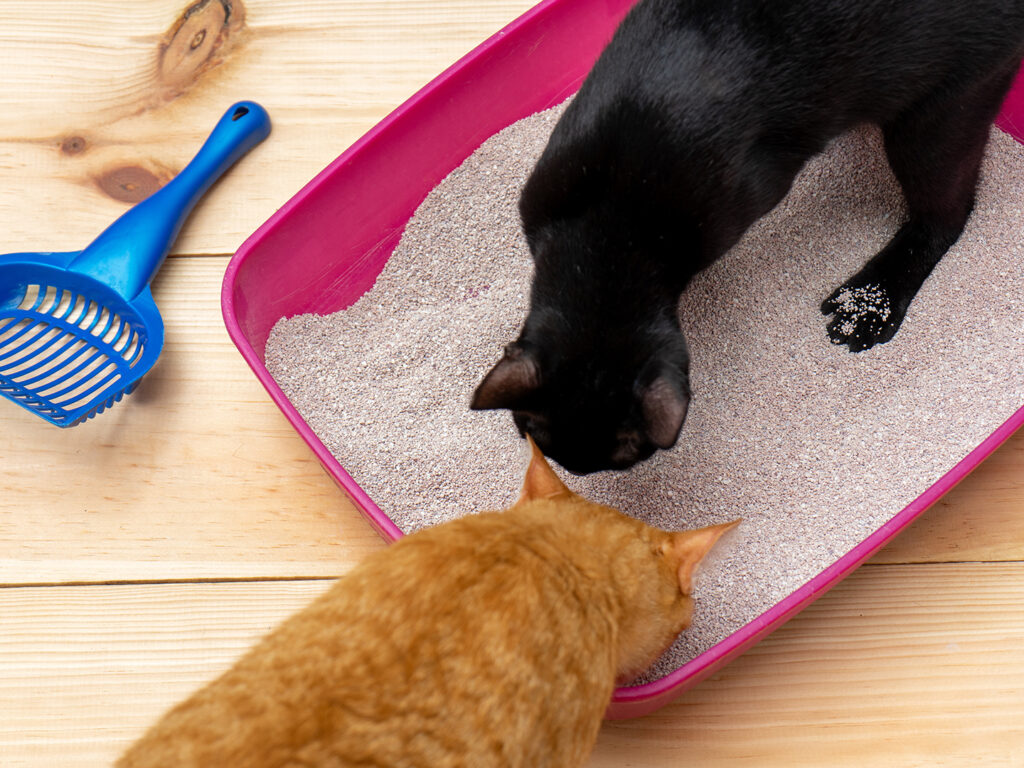A Guide To Litter Box Etiquette

The first stop after getting a new cat is usually the pet store for food, toys, and furniture, with a litter box being a top priority. You may not give much attention to the box itself or the cleaning etiquette it takes to care for them, but there can be messy consequences if cats are not on board with their new restroom.
Dr. Audrey Cook, a professor at the Texas A&M School of Veterinary Medicine & Biomedical Sciences, says choosing the right litter boxes and maintaining them appropriately will help owners avoid common litter box problems, like cats going to the bathroom outside of the box or developing health concerns from not going when they need to.
Finding The Right Litter Boxes To Encourage Use
First, Cook encourages owners to provide a litter box variety with different shapes, sizes, and household locations so that cats can find a litter box that works best for them.
“The house should have one box for each cat plus one extra, so two for one cat, three for two cats, and so on,” Cook said. “Many litter boxes are simply too small to be used comfortably, so be sure to get a large box that easily accommodates the pet. Litter boxes should also be placed in quiet areas away from foot traffic and machinery, like the washing machine, allowing cats to go in peace.”
The assortment of litter boxes should not include covered boxes, as this type of box can make cats feel unsafe, according to Cook.
“Owners often reach for covered boxes to reduce odor, but some cats do not like to be in a covered box, as they can’t survey their surroundings, making them feel less safe when leaving the box,” Cook explained. “Cats can be attacked by other cats whilst exiting the box, so being able to see their surroundings is important for those using the litter box in a multiple-cat household.”
Another way to make litter boxes comfortable is to choose the right litter.
“Try various litters, as some cats have strong preferences for how the litter feels under their feet,” Cook suggested. “There are some litters specifically designed to encourage use by attracting cats to the box with scents, so owners can talk to a veterinarian about options if there is a concern about cats not using litter boxes.”
Cleaning Litter Boxes Prevents Health Issues
While comfort and safety are important factors in choosing litter boxes, cleanliness determines whether a cat will do their business in the box.
“If the box does not fit a cat’s needs or is uncomfortable, then cats may seek other areas in the house to go to the bathroom,” Cook explained. “Poor litter box care can also increase the chances of a cat choosing to go elsewhere, as they prefer to urinate and defecate in clean boxes.”
This can be a problem not only for owners — should the cat choose to go outside of the box — but could also potentially create health troubles for the cat.
“An unwelcome and unclean box can even cause the cat to avoid urinating or defecating until absolutely necessary, which can promote constipation and predispose the cat to urinary problems,” Cook said.
As such, owners should plan and implement a regular cleaning routine to ensure cats will use their box.
“Boxes should be scooped at least once a day, and if owners find it a challenge to take care of the box routinely, automatic boxes can be very helpful,” Cook said. “Every two to three weeks, the box should be washed as well and the old litter dumped and replaced. Litter should be about 2 inches deep for standard clumping types while other bagged litter will have directions.”
When cleaning litter boxes, owners should monitor the contents left behind from their cats, as this also can alert them to health concerns that require veterinary care.
“It is important to keep an eye on what is in the box, specifically size of urine puddles and consistency of feces,” Cook said. “Owners need to notice changes in puddle size, as bigger or smaller puddles can indicate disease, such as kidney or bladder problems, while changes in fecal size could suggest diseases relating to the digestive system.”
Litter boxes and their cleanliness are two of the most important considerations you can make for your feline friends, and getting it wrong can disrupt your cat’s bathroom habits. Choosing the right box and keeping it clean will ensure that your cat loves and, more importantly, uses their new bathroom.
Pet Talk is a service of the College of Veterinary Medicine & Biomedical Sciences, Texas A&M University. Stories can be viewed on the web at vetmed.tamu.edu/news/pet-talk. Suggestions for future topics may be directed to vmbs-editor@tamu.edu.


